A product or service is being introduced in the market to drive sales. While businesses have control over the quality and kind of product they sell, the buying process lies in the hands of the customer. Understanding customers' behaviors through a target audience template allows companies to market their products more effectively.
When businesses comprehensively understand their target audience, they can develop more informed messaging, timing, and media decisions.
What is a target audience?
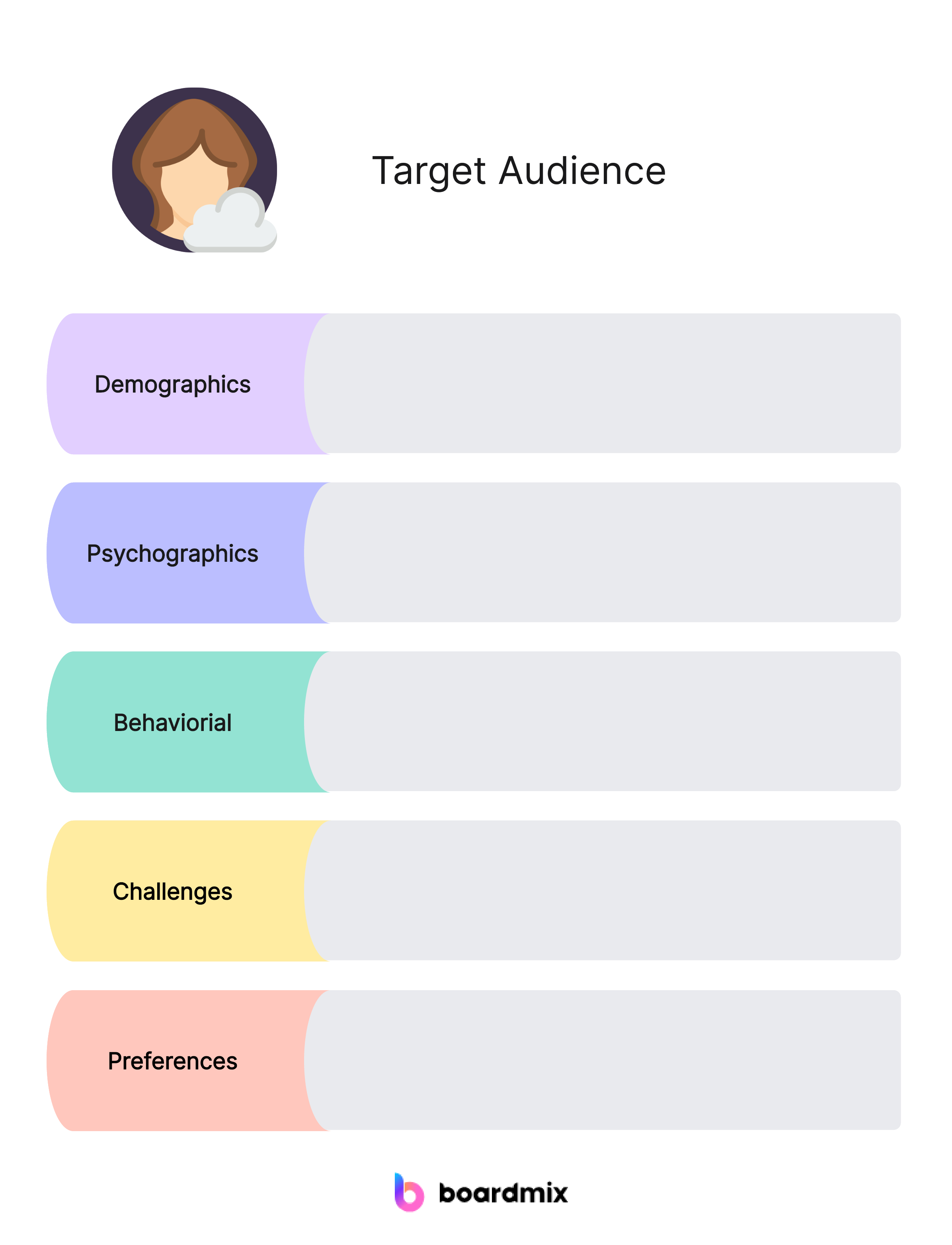
A target audience could also mean a group interested in a company's products and services. They often share the same traits, at the same age group, or might be in the same societal class. Identifying the target audience is essential in developing a successful marketing strategy. Failure to know who your target audience is will jeopardize your business.
Depending on how you map out your target audience template, you can use various columns or have them down using sticky notes. This way, it's easier to get an overall picture of who they are, how they behave, and what they want.
Why is the target audience analysis important?
One of the goals of opening a business is increasing your customer base. To do so, it's vital to identify the people who best resonate with your services or products. As you know, they will significantly affect business strategies and decisions about product development.
Below are some additional reasons why businesses must run an audience analysis.
- The analysis allows you to convert potential parties into customers quickly.
- Customer analysis lets you develop cost-effective marketing strategies, saving time, resources, effort, and money.
- Personalize your marketing content effectively, which could drive better results.
- The analysis can provide customer requirements so companies can meet them to ensure higher customer satisfaction.
- You can increase your customers by ensuring an increased conversion rate.
- The target audience template analysis will strengthen the company's market position so you can establish the brand in the market.
Target Audience Examples for Real Application
1. Fitness Enthusiasts and Health Conscious Consumers
Target Audience Profile: This group typically includes individuals aged between 20 to 45, who prioritize health and fitness as part of their daily routine. They may engage in activities such as gym workouts, yoga, running, or outdoor sports. This demographic often has a higher disposable income and is willing to invest in fitness memberships, health supplements, and organic food products.
Application: A health food company could target this audience with a line of organic, non-GMO protein powders and meal replacement shakes. Marketing campaigns would focus on the benefits of organic ingredients, the convenience of meal replacements for busy lifestyles, and the role these products play in supporting an active lifestyle.
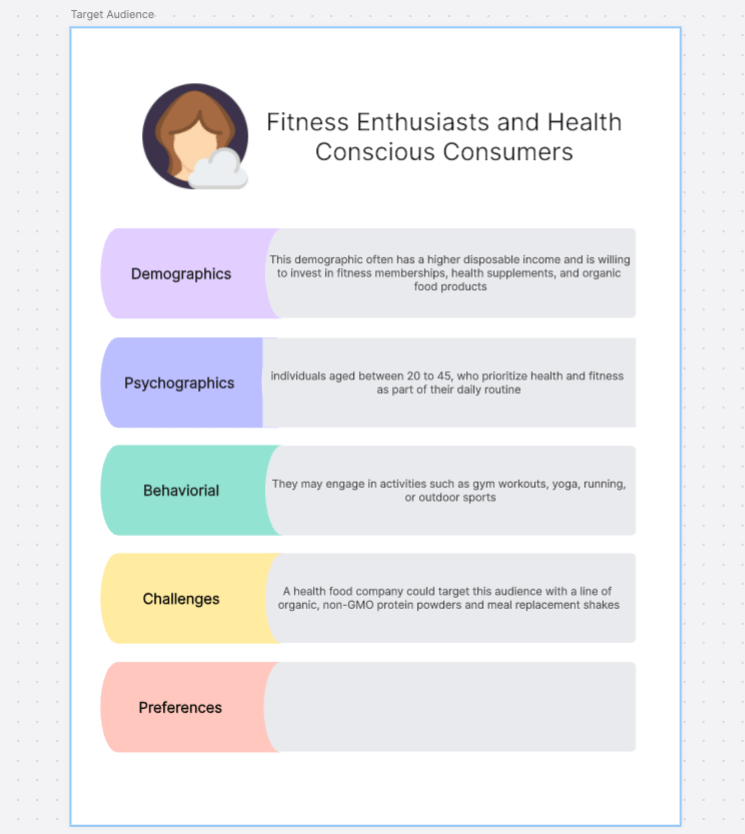
2. Tech-Savvy Millennials
Target Audience Profile: Millennials, particularly those in their late 20s to early 30s, who are tech enthusiasts and early adopters of new gadgets and digital platforms. They are likely to be well-educated, urban dwellers, and have a strong presence on social media platforms like Instagram and Twitter.
Application: A smartphone manufacturer might target this audience with the launch of a new, cutting-edge smartphone. The marketing strategy would highlight features like advanced camera technology, long battery life, and innovative design, leveraging social media influencers to showcase the product in a relatable and aspirational context.
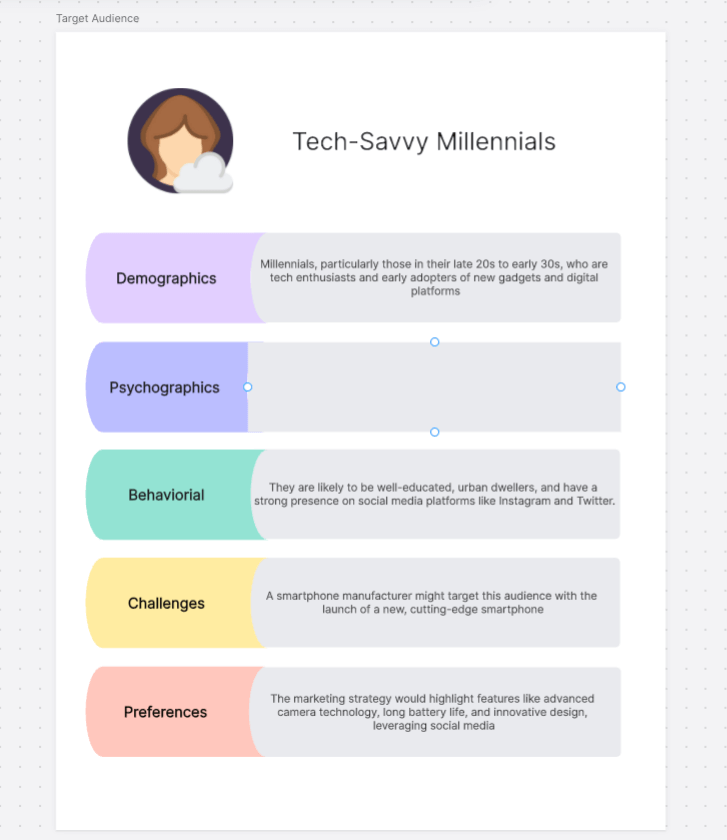
3. Parents of Young Children
Target Audience Profile: Parents with children aged 0 to 10 years, who are looking for products and services that cater to their children's development, safety, and entertainment needs. This group is often concerned with the quality and educational value of the products they purchase for their kids.
Application: A toy company could target this audience with a line of educational toys that promote cognitive development, creativity, and problem-solving skills. Marketing efforts would emphasize the educational benefits of the toys, use testimonials from satisfied parents, and possibly partner with parenting blogs or websites to reach this audience effectively.
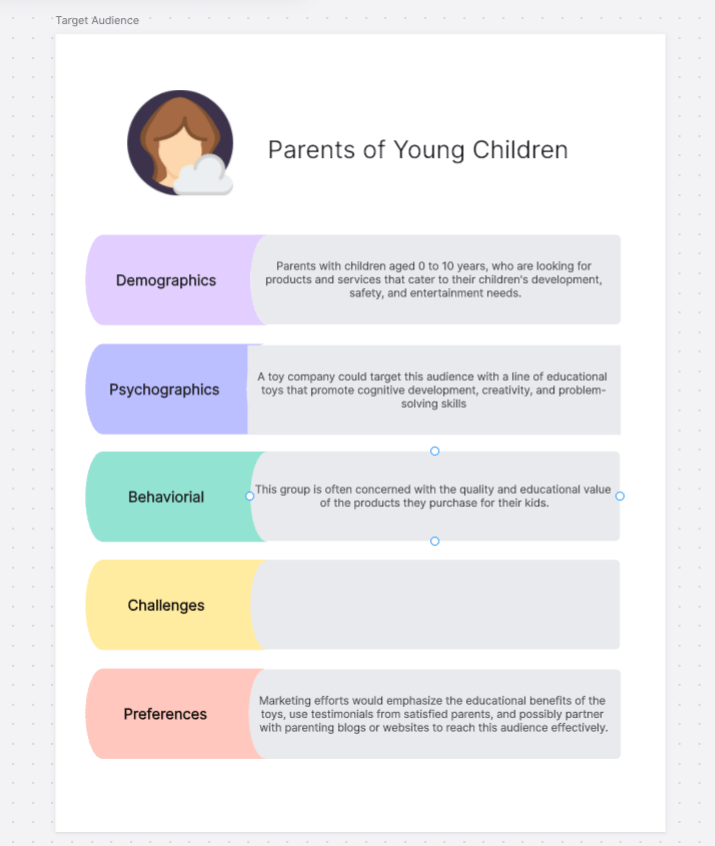
When to use the target audience template?
While you can create your target audience template whenever you want to know your customers better, there are significant aspects of the business process where this document is vital.
- Identifying who's interested in your service/product. You can use the template to know the specific customers interested in your offers.
- Running multiple projects simultaneously. The target audience template lets your team stay organized and aligned while keeping potential target customers as the priority of the marketing efforts.
- Focusing on specific demographics. The templates allow your team to focus on different demographics, including age and gender. Some companies might also want to explore their potential customers' interests and opinions.
- Launching a new product. The target audience template is essential to introduce a new product. Besides knowing specific audience groups that have an interest in the product, it also increases the probability of driving better sales and profits.
How to use the target audience template in Boardmix?
Boardmix's target audience template is easy to use even with little knowledge about digital diagramming. Look closely at the guide below.
1. Create a Boardmix account.
Sign up for a Boardmix account using your email or third-party account (Google account or Naver account) and log in to access everything on Boardmix, including your file resources, and your organizational workspace that contains teams and projects.

2. Select a template or create a new board.
Boardmix provides a variety of templates to help you improve your creativity and productivity. On the homepage of the Boardmix workspace, click the Template Center from the left menu bar to browse all ready-made templates. Search for Audience Analysis choose a template that meets your needs and click Use to create a template file directly. You can also create a new board to customize your work.
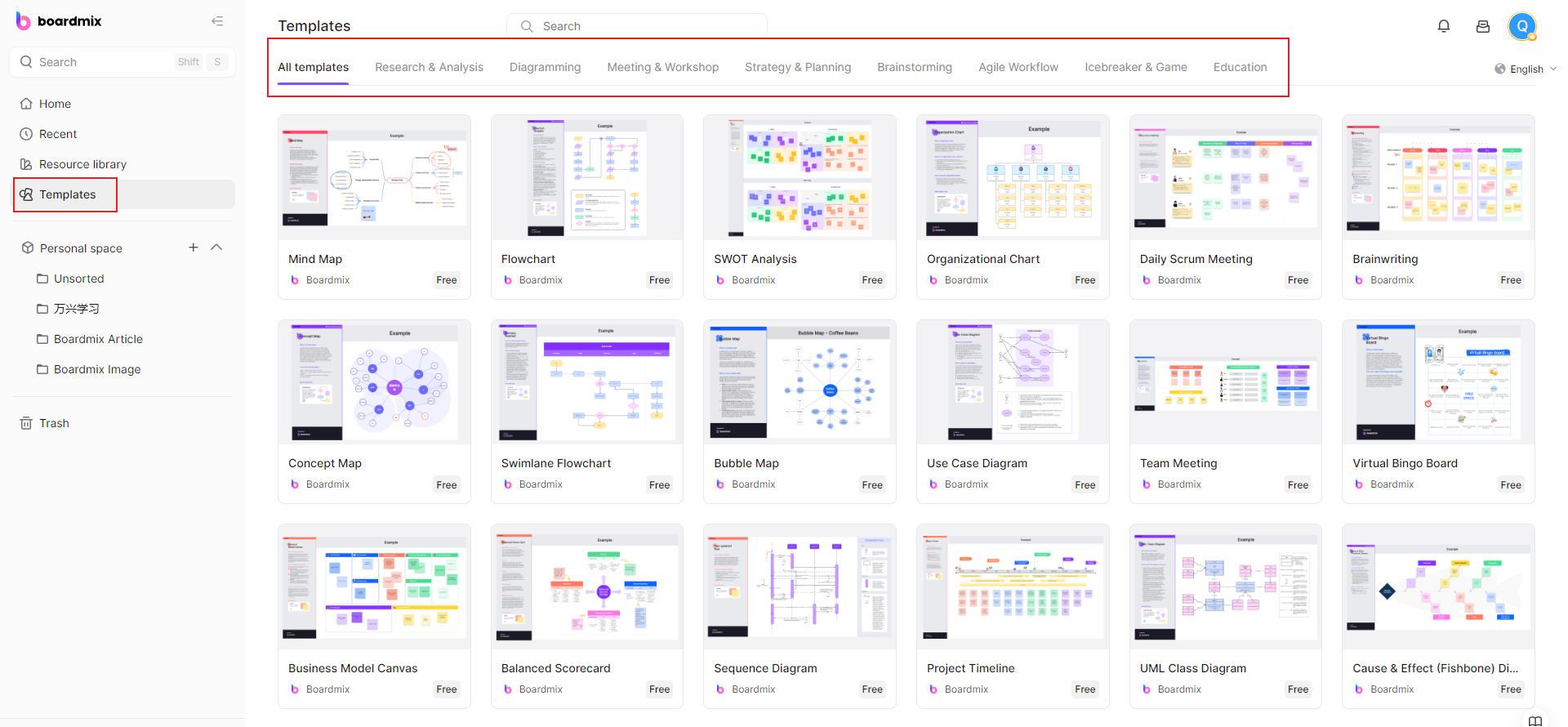
3. Define Your Target Audience
Firstly, you'd need to define your target audience, which includes their age, gender, location, occupation, education level, hobbies, and so forth. You can create a new mind map on Boardmix, presenting all the relevant information in a structured manner.
4. Analyze Consumer Behavior
You then need to comprehend your target audience's consumer behavior. For instance, on which platforms do they usually seek product information, and how are their purchasing decisions formed? What are their expectations regarding the product's quality, price, brand reputation, and customer service? You can create dynamic charts on Boardmix to visualize this information.
5. Identify Needs and Pain Points
Next, it's vital to delve into understanding your target audience's needs and pain points. This information can be gathered through market research, user feedback, or data analysis. You can then create nodes on Boardmix, with each node representing a need or pain point, and use arrows and labels to depict their relationships.
6. Develop Strategies
Finally, based on your audience analysis, you need to devise corresponding product, marketing, and service strategies. You can create a new mind map on Boardmix, listing all strategies and action plans, and assigning responsibilities and timetables.
Through these steps, Boardmix can facilitate a comprehensive and in-depth audience analysis, enabling a better understanding of your consumers and crafting effective strategies to satisfy their needs.
Before structuring your template on Boardmix, performing some processes is beneficial so you'll have concrete data and statistics about your target audience. Here's how to do it.
- Collect significant demographic data. Companies use these sets of criteria to describe customer segments. Besides relying on interviews and social media channels for the data, you can have solid demographic data using your current customers.
- Gather location data. You can identify your desired audience by city, neighborhood, state, region, or country.
- Gather psychographic data. This category contains information about potential customers' interests, opinions, activities, and opinions. The data you'll have here will be instrumental as they can be so granular.
- Choose two to five identifiers. There can be countless identifiers in one target audience. Pick those who provide significant information that gives you more insights into your target audience.
- Test your target audience. Once everyone agrees on the template you created, you can speak to your audience directly or contact them online.
FAQs about target audience analysis
What are the four types of target audiences?
The four target audience types include geographic, psychographic, demographic, and behavioral.
How do you identify the target audience?
You can determine the target audience by performing the following processes.
- Client interviews
- Market research
- Identify industry trends
- Analyze competitors
- Create personas
- Define who's not your target audience
- Use Google Analytics








